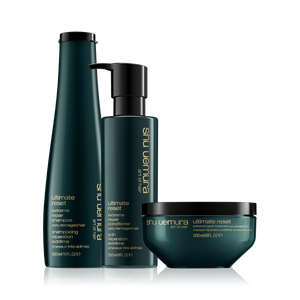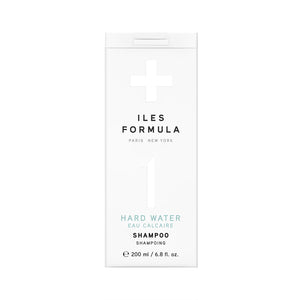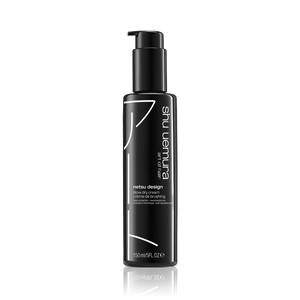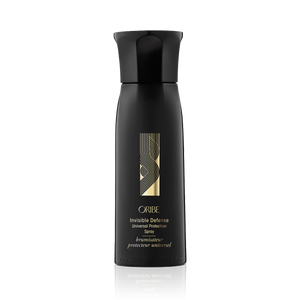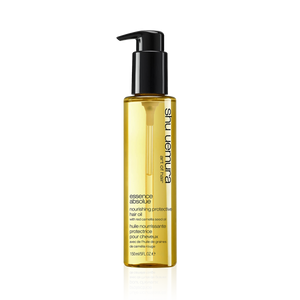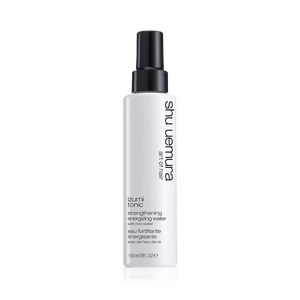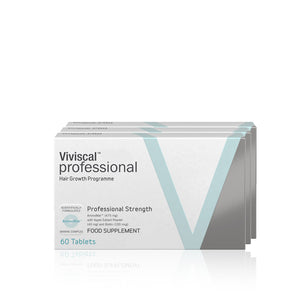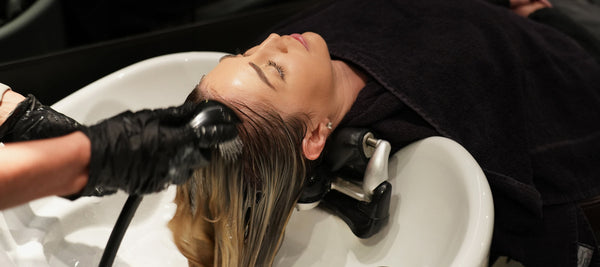This is why your hair keeps breaking and what to do about it
When your strands start snapping, it’s important to act fast.
Breakage is one of the most severe forms of hair damage, and if you don’t figure out the root cause and treat the issue it can quickly worsen.
What exactly do we mean by breakage? As opposed to hair fall, where the strands fall out at the root, breakage is “hair snapping at any point along the strand,” says senior director Matilda Collins, although some areas are more common than others.
“Usually hair is finer and more fragile along the hairline so it's more likely to break, and that's the bit that will always have colour, whether you have T-section, half head or full head application. Also, you're always going to style the front so that part of your hair could be more fragile from heat styling.”
UV rays can also frazzle the top sections, says senior colourist Steven Kamara: “Those areas are more exposed to sun, especially in summer, whereas the underneath of your hair isn't obviously going to get the sun.”
Wherever breakage happens to occur, the key to restoring your hair to its healthy best is a combination of salon treatments, home haircare, and knowing how to prevent further damage. Here, the team explain how to do just that, plus we’ll hear from a celebrity client about her remarkable hair rehab journey…
WHAT CAUSES HAIR BREAKAGE
Whether you want to prevent hair breakage or stop it from spreading, first you need to understand why it happens.
Sometimes, hair can be fragile due to underlying health issues, Matilda says: “If someone's on medication or they've been unwell, their hair could be fine and more fragile.” Similarly, hormone or vitamin level fluctuations can make hair more dry or brittle. “A lot of women going through the menopause realise their hair is breaking off a lot more than it used to.”
However, the physical snapping of strands is usually triggered by external factors, with colouring being a top culprit.
“Bleaching your hair is going to make it drier, which is why we’re very careful when doing a highlight or bleach service not to overlap the hair that was previously coloured,” Steven says. The same goes for chemical straighteners, relaxers and perms, and city dwelling doesn’t help either. “The hard water and pollution we have in London can cause a build-up on the hair.”
Hair dryers, straighteners and curling irons are another major cause, Matilda says: “Any heat over 180 degrees is damaging, especially when people use metal brushes to blow dry, then it can get a lot hotter.”
Friction and tension from a variety of sources can cause even strong tresses to snap. For example, with hair extensions, “the weight of each piece on your strands can cause breakage over time if they're not either maintained or applied correctly, or if that method's not quite right for your hair,” Matilda says.
“People can have breakage on their crown if they move a lot when they sleep,” she continues. “And hair's also more vulnerable when it's wet, so if people go to bed with wet hair, that's when they get breakage.” Also take note of hair breaking only on one side. “It could be the side that you wear your handbag and your hair's getting caught underneath the shoulder strap.”
Senior director Justyna Kubiak adds a word of warn about tying your hair up: “There can be breakage from the hair band if you don't use a gentle one, like a silk scrunchie, or if it's too tight.”
SALON TREATMENTS FOR HAIR BREAKAGE

While home haircare products are great for breakage prevention, when you’ve already got a glut of broken strands, a professional salon treatment is your best bet for strengthening those fragile locks.
“If you’ve been using repairing products at home and you're still not getting anywhere, come in for a consultation, because it could be that those products are not complementing each other or you're overdoing it,” Matilda says.
At the consultation, your stylist or colourist can assess the condition of your hair and decide which treatment they would recommend. “If the hair is brittle because of all the metal particles in hard water, the L’Oreal Metal Detox treatmeant is ideal for taking all the impurities out of the hair,” Steven says.
For moderate amounts of breakage, Matilda says the bond-building Redken SAM treatment is great because “we can tailor the amount of moisture and protein.” Ensuring this balance is key, as too much protein can, conversely, make hair more prone to breakage. “Same with the Kérastase Fusio Dose and Davines Naturaltech. Because they're cocktailed we can tailor them to create the strongest hair.”
For maximum repair, it doesn’t get better than Ultimate Protein Repair (UPR), an intensive protein-building treatment that can be applied every two weeks. “If someone's having UPR, we alternate it so that they have the Collagen Infusion Treatment in between to keep the moisture up as you're putting the protein in.”
ASHLEY ROBERTS’ HAIR REPAIR JOURNEY
Presenter and former Pussycat Dolls star Ashley Roberts had noticed her hair was feeling weaker and more damaged than usual, which she attributed to a number of factors.
“Extensions, bleach, sun, heat styling, maybe not using the right products – so many things over the years just took their toll,” says Ashley, who asked creative director Alfie ONeill for his help. “We had a discussion on our hair goals and it was to strengthen my hair and help it grow. Alfie recommended going back and forth between the UPR and the Collagen Infusion Treatments.”
The combination worked wonders. “I look back at pictures of myself when I was younger and I'm like, ‘Oh, I'm getting my hair back!’ Like before I became a Doll or dyed my hair blonde,” says Ashley, who has just released her first book, Breathwork. “For so long I was putting in extensions, which made my hair thinner, so getting my thickness, length and shininess back, it just feels nice to have my own head of hair feel strong again.”
Ashley’s also been using the Shu Uemura Izumi Tonic Mask, which she describes as a “gamechanger” and is a convert to silk pillowcases – which reduce friction on your locks while you sleep – after trying one she had been gifted. “I ended up going and buying four more. I feel like it's making a difference to my face and hair.”
HAIR PRODUCTS TO PREVENT AND REPAIR BREAKAGE
Committing to a nourishing home haircare routine is the best way to prevent breakage from happening in the first place.
Matilda recommends the Shu Uemura Ultimate Reset range to strengthen and restore dry or damaged hair or, if you live in a hard water area, the Iles Formula Hard Water Shampoo. “A client of mine, her hair was so dry and breaking, she started using the Iles Formula shampoo once a week and it's made such a difference.”
For heat styling, she’s a big fan of Shu Uemura Netsu Design cream, which provides heat protection up to 230 degrees, Oribe Invisible Defence Universal Spray or Shu Uemura Essence Absolue, which is “a great all-rounder for giving pure nourishment and UV protection. You can use it as a mask on wet hair if you can leave it for minimum of 20 minutes before you wash it off.”
Once a week, add a treatment such as Oway Rebuilding Hair Mask or Oribe Hair Alchemy Strengthening Masque into your routine, and for a lightweight but finishing serum, try rice water-infused Izumi Tonic from Shu Uemura.
And finally, consider taking a multivitamin formulated for hair health, such as Viviscal, Matilda suggests. “If your hair is fragile and you’re trying to stop breakage, that can help to make sure hair is as healthy as possible from the inside.”
Bye bye breakage
It can be worrying when you notice lots of snapped strands that weren’t there before, but with the right products and treatments you can restore your hair health in no time.
Your hairdresser can help you work out the cause of the damage and formulate a plan to make breakage a thing of the past.
Wondering why your hair is breaking more than usual? Book a consultatition at Paul Edmonds London.



